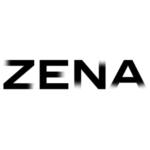What is Almanac?
Almanac: The Collaborative Doc Platform for Modern Teams
In today’s fast-paced work environment, knowledge sharing and collaboration are the backbone of productive teams. While traditional tools like Google Docs and Notion serve the purpose to an extent, teams often struggle with version control, approval workflows, and scattered documentation. Almanac is built to solve exactly these challenges. Designed as a collaborative documentation and workflow platform, it provides the structure, automation, and transparency needed to keep teams aligned and efficient.
Key Benefits of Using Almanac
1. Version Control and Transparency
One of the standout features of Almanac is its GitHub-style version control for documents. Teams can branch, suggest edits, and merge changes without overwriting the original. This ensures accountability, clear ownership, and a single source of truth for important docs like handbooks, SOPs, and proposals.
2. Streamlined Workflows
Unlike traditional docs, Almanac embeds approval workflows directly into the platform. You can assign reviewers, set due dates, and track progress. This reduces back-and-forth communication and speeds up decision-making while maintaining quality and compliance.
3. Knowledge Centralization
Almanac functions as a knowledge hub for organizations. Whether it’s onboarding materials, product playbooks, or marketing strategies, everything can be organized into structured workspaces. Employees no longer waste time hunting down the latest version of a document—it’s all in one place.
4. Collaboration Without Chaos
Almanac balances flexibility with structure. Users can comment, suggest, and discuss within docs without the clutter of endless chat threads. This keeps feedback contextual and actionable, which is particularly helpful for remote or hybrid teams.
5. Integrations and Accessibility
Almanac integrates with tools like Slack, Google Drive, and GitHub, ensuring teams don’t need to abandon their existing workflows. Its intuitive interface makes onboarding simple, even for non-technical team members.
How Teams Use Almanac
Almanac is versatile enough to support a variety of use cases across industries:
- Startups use it to create dynamic handbooks, OKR trackers, and fundraising documents.
- Marketing teams build campaign playbooks and content calendars with review workflows.
- Engineering teams document processes, design systems, and technical specs with version history.
- HR departments rely on it for onboarding guides, policies, and performance review templates.
For example, a growing SaaS company can use Almanac to document its sales playbook. Instead of emailing versions back and forth, the team collaborates in real-time, reviewers approve changes through structured workflows, and the entire organization accesses the most up-to-date version.
Final Thoughts
Almanac stands out because it brings order and accountability to documentation. Where other tools focus only on writing and collaboration, Almanac adds a structured layer of versioning, approvals, and workflows—making it a perfect fit for growing teams that need to scale knowledge sharing without losing control.
By streamlining documentation and processes into a single source of truth, Almanac empowers teams to move faster, work smarter, and collaborate with confidence. For any organization looking to upgrade from scattered docs and messy workflows, Almanac is the modern solution worth adopting.



